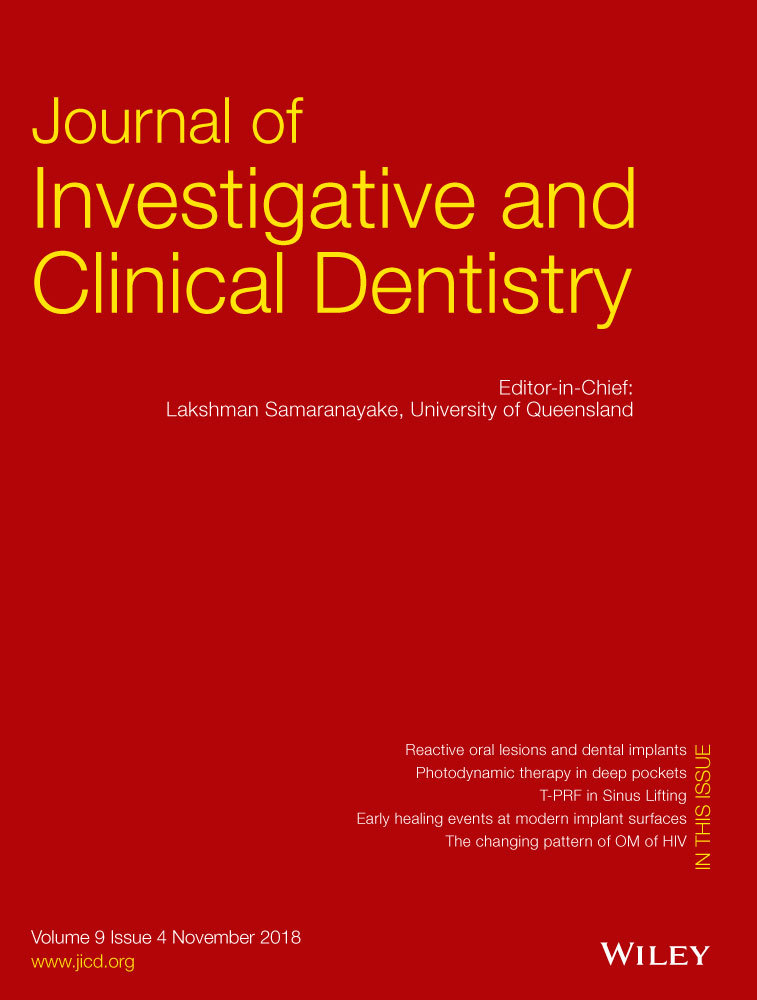Influence of the position of the antrostomy in sinus floor elevation assessed with cone-beam computed tomography: A randomized clinical trial
Abstract
Aim
The aim of the present study was to evaluate dimensional variations of augmented sinus volumes after sinus floor elevation using a lateral approach placing the antrostomy close to the sinus floor or more cranially to it.
Methods
Twenty-four healthy volunteers in need of sinus floor elevation were included in the study. The lateral approach was adopted placing the antrostomy randomly either close to the level of the sinus floor (group A) or approximately 3-4 mm cranially (group B). Cone-beam computed tomography (CBCT) was done before surgery (T0) and after 1 week (T1) and 9 months (T2), and analyses on dimensional variations were performed.
Results
CBCT of 10 patients per group were analyzed. At T1, the sinus floor was found to be elevated by 9.8 ± 2.1 mm in group A and 10.9 ± 1.9 mm in group B. At T2, shrinkage of 2.0 ± 1.7 mm in group A and 1.4 ± 2.5 mm in group B was observed. The area was reduced approximately 18-24% between T1 and T2. The sinus mucosa width increased by 4.3-5 mm between T0 and T1, and regained the original dimensions at T2.
Conclusions
The more cranial the antrostomy, the greater the augmentation height after 9 months.




